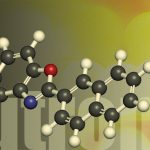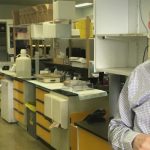
In the first interview of our series “Portrait of Duchenne,” La Force DMD talks with Dr. Jeffrey Chamberlain, a geneticist at the University of Washington, Seattle, about adenovirus-associated (AAV) micro-dystrophin gene replacement therapy.
Our journey at Fondation La Force travels the road of discovery with parents and friends to find new experimental treatments and the most promising research for children and adults with Duchenne muscular dystrophy (DMD). In November 2016, we went to the 14th Action Duchenne International Conference in London, UK, to meet with the international DMD community on your behalf. We interviewed leading researchers, pharmaceutical company representatives, other foundations, families, children and more! Our new series of blogs about these encounters will bring new hope and inspiration.
Why start with gene replacement therapy?
This promising therapy is not far from clinical trials. If all goes well, treatment of the first patient will probably begin in the coming year. It directly treats the cause of Duchenne muscular dystrophy (DMD) – a lack of dystrophin in muscle cells. A synthetic form of the dystrophin gene will be injected into the bloodstream and delivered to muscles by an adenoviral delivery system. If it works, muscles will begin to produce the missing dystrophin protein. One single treatment may last for 10 or 15 years, predicts Dr. Chamberlain, but the duration of potential benefits are still unknown.
In the video, Dr. Chamberlain answers our questions about gene replacement therapy:
What’s the idea behind gene replacement therapy?
“The idea behind gene replacement therapies is to develop a synthetic or more of a “normal” version of the dystrophin gene and find a way to deliver it back into the muscles to replace the defective dystrophin gene.”
How do you deliver the synthetic gene into the body?
“The idea is to make this synthetic gene, put it into a small delivery vehicle, inject it right into the bloodstream and then it just, all by itself, leaks out of the bloodstream and goes to the muscles and starts making the missing protein.”
How long will one treatment last?
“The other thing we don’t know is how long this therapy will last for. Our study so far suggested it’s a fairly long-lasting treatment, but it is something that might need to be replaced in 10 or 15 years. By ‘replace’, I mean to do a repeat administration.”
What’s the name of this process?
“The miniaturized gene that we’ve developed, we call a micro-dystrophin, because it’s so much smaller than the dystrophin. The delivery vehicle is referred to as AAV, which is the name of the virus that it was made from, and together… we usually just refer to it as a systemic vector gene delivery system.”
Can gene replacement therapy cure DMD?
“The gene replacement technology will fix the muscles that are there, but an older patient that’s lost a lot of muscles will probably only make a partial recovery, so that’s why I say it’s a little short of a cure.”
What’s the timeline for treatment?
“The timing is a little hard to predict, because it depends on a lot of regulatory approval and, you know, getting everything in place and showing the safety, but a lot of that has been done, and Solid GT, I know, is hoping to apply to begin a human trial very soon and, if everything goes well, the first patients will be treated in the next year.”
Are you excited about the next steps in development?
“We have something that we think is going to be effective, and we’re very excited to put it to the test.”
Who is Dr. Jeffrey Chamberlain?
Dr. Jeffrey Chamberlain has worked on gene replacement therapy for 25 years.
- He is Professor, Dept. of Neurology, Medicine and Biochemistry, McCaw Endowed Chair in Muscular Dystrophy, University of Washington, Seattle, Washington, USA
- Author of Duchenne Muscular Dystrophy: Advances in Therapeutics (Neurological Disease and Therapy)
- Director of the Senator Paul D. Wellstone Muscular Dystrophy Cooperative Research Center, Seattle, Washington, USA
- Scientific Advisory Board member, Solid GT, subsidiary of Solid Biosciences, a Cambridge, MA-based life science company committed to DMD research.
Up next:
To receive the next interview in our series “Portrait of Duchenne,” please subscribe to our newsletter.
Our next portrait: Utrophin with Michelle Avery of Summit Therapeutics
Acknowledgements
We thank the Action Duchenne UK team, who received us with open arms and gave us access to all key speakers at their conference. Because of their generosity, we can spread this hopeful information to the Canadian DMD community.
To know more about the Action Duchenne conference :
Special Thanks to Daniel K Cooper and Alain Lagadic




